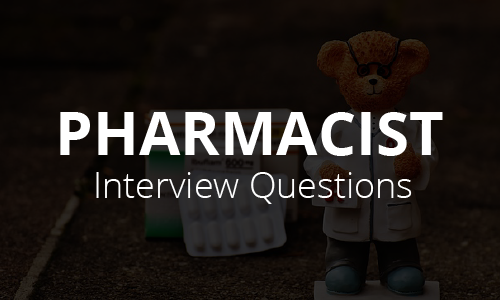What is Quality Control?
Quality control is a process or set of procedures designed to ensure that a product or service meets specific quality requirements and standards. It involves monitoring and testing the product or service at various stages of production or delivery to ensure that it meets all predetermined quality specifications.
The purpose of quality control is to identify and correct any defects, errors, or deviations from the desired quality standards, and to ensure that the final product or service is safe, effective, and meets the expectations of the customer products.
Why is quality control important in the pharmaceutical industry?
Quality control is important in the pharmaceutical industry because it ensures that drugs are safe, effective, and of high quality. It helps to prevent defects and deviations from occurring during the manufacturing process, and ensures that products meet all regulatory requirements and industry standards.
Quality control also helps to build consumer confidence in the safety and efficacy of pharmaceutical products, which is essential for the success of the industry.
What are the steps of quality control in the pharmaceutical industry?
Quality control is a critical process in the pharmaceutical industry to ensure that drugs are safe, effective, and of high quality. The following are the typical steps of quality control in the pharmaceutical industry:
Sampling and testing: The first step in quality control is to take representative samples of the drug product and test them for various quality attributes, such as potency, purity, and stability.
Analytical method development: In order to accurately test the drug product, a suitable analytical method must be developed that can detect and quantify the active ingredient and any impurities.
Analytical method validation: Once the analytical method has been developed, it must be validated to ensure that it is reliable, accurate, and reproducible.
Stability testing: Pharmaceutical products must be tested for stability over time to ensure that they retain their quality and efficacy throughout their shelf life.
Documentation: All quality control activities must be documented thoroughly, including the sampling and testing procedures, analytical method development and validation, and stability testing results.
Release testing: Before a drug product can be released for sale or distribution, it must undergo rigorous testing to ensure that it meets all quality standards and specifications.
Continuous monitoring: Quality control is an ongoing process that continues throughout the life cycle of the drug product. Manufacturers must monitor product quality and make any necessary adjustments to maintain consistent quality.
Auditing and inspections: Regulatory authorities may conduct audits and inspections of pharmaceutical manufacturing facilities to ensure that they comply with all applicable quality standards and regulations.
Overall, quality control is a critical part of the pharmaceutical manufacturing process, and manufacturers must adhere to strict quality standards to ensure that their products are safe and effective for patients.
what do you know about qualitative analysis?
Qualitative analysis in pharmaceuticals involves the identification and characterization of the chemical and physical properties of drugs and their related substances. It is an essential aspect of drug development, manufacturing, and quality control.
What are the different techniques included in Qualitative analysis?
Qualitative analysis includes various techniques such as:
Chromatography: It is a separation technique that separates the components of a mixture based on their chemical properties. High-performance liquid chromatography (HPLC) and gas chromatography (GC) are commonly used in pharmaceutical analysis.
Spectroscopy: It is a technique that uses electromagnetic radiation to measure the interaction of a sample with light. Some of the commonly used spectroscopy techniques in pharmaceutical analysis are infrared (IR), ultraviolet-visible (UV-Vis), nuclear magnetic resonance (NMR) spectroscopy., Raman Spectroscopy, and X-Ray Spectroscopy.
Mass Spectrometry: It is an analytical technique that ionizes a molecule and separates the ions based on their mass-to-charge ratio. Mass spectrometry (MS) is used to determine the molecular weight of a drug or its related substances.
Thermal Analysis: It is a technique that studies the physical and chemical properties of a substance as a function of temperature. Differential scanning calorimetry (DSC) and thermogravimetric analysis (TGA) are commonly used thermal analysis techniques in pharmaceutical analysis.
Microscopy: It is a technique that uses a microscope to study the structure and morphology of a substance. Polarized light microscopy (PLM) and scanning electron microscopy (SEM) are commonly used in pharmaceutical analysis.
What are techniques are used in Quantitative analysis?
Quantitative analysis techniques are mainly used to quantify any compound or substance in the sample. These techniques are based in:
the quantitative performance of suitable chemical reaction and either measuring the amount of reagent added to complete the reaction or measuring the amount of reaction product obtained, the characteristic movement of a substance through a defined medium under controlled conditions,
electrical measurement, measurement of some spectroscopic properties of the compound.
What is the key difference between qualitative and quantitative analysis?
Qualitative analysis involves identification of the compound or chemical based on their chemical (absorption, emission) or physical properties like Melting point, boiling point).
Quantitative analysis involves estimation or determination of concentration or amount of the chemical compounds or components.
What is Friability Test of Tablet?
Friability is defined as the percentage of weight loss of powder from the surface of the tablets due to mechanical action and the test is performed to measure the weight loss during transportation.
Friability (%) =W1– W2/W1X100
Where,
W1 = Weight of Tablets (Initial / Before Tumbling) &
W2 = Weight of Tablets (After Tumbling or friability)
Limit: Friability (%) = Not More Than 1.0 %
Can you explain HPLC?
HPLC stands for High-performance liquid chromatography. It is a widely used analytical technique in the pharmaceutical industry for quality control of drugs and their related substances. It is a powerful tool for the separation, identification, and quantification of drug molecules and their impurities.
In pharmaceutical quality control, HPLC is used to:
Identify and quantify the active pharmaceutical ingredient (API) in a drug product.
Determine the impurity profile of a drug substance or drug product.
Analyse the stability of a drug substance or drug product under different conditions.
Test the dissolution profile of a drug product.
Monitor the process of drug development and manufacturing.
What is use of IR spectroscopy and Range of IR?
Infrared (IR) spectroscopy is used to identify functional groups, measure the purity of a sample, and detect impurities. IR spectroscopy range: 4000-400 cm-1.
What is use of UV-Vis spectroscopy and Range of UV-Vis?
Ultraviolet-visible (UV-Vis) spectroscopy is used to determine the concentration of a sample and to detect impurities. UV-Vis spectroscopy range: 200-800 nm.
What is use of NMC spectroscopy and Range of NMC?
Nuclear magnetic resonance (NMC) is used to identify the structure of a molecule, measure the purity of a sample, and detect impurities. NMR spectroscopy range: 0-1000 MHz.
What is use of X-ray spectroscopy and Range of X-ray?
X-ray spectroscopy is used to identify the crystal structure of a molecule, measure the purity of a sample, and detect impurities. X-ray spectroscopy range: 0.1-10 nm.
Can you explain DSC?
DSC stand for Differential Scanning Calorimetry. DSC is a technique that measures the difference in heat flow between a sample and a reference material as they are heated or cooled. In pharmaceutical analysis, DSC is often used to study the physical and chemical changes that occur in drug substances and formulations during heating or cooling, such as melting, recrystallization, and degradation.
Can you explain TGA?
TGA stands for Thermogravimetric Analysis. It is a technique that measures the change in weight of a sample as it is heated or cooled in a controlled atmosphere. It can provide information on the thermal stability and decomposition behaviour of a sample. In pharmaceutical analysis, TGA is often used to study the thermal stability of drug substances and formulations, as well as the purity of the sample.
TGA can also be used to determine the moisture content of a sample by measuring the weight loss due to the evaporation of water.
If you are applying for a pharma quality control(QC) job, check out this video for a comprehensive list of quality control Interview questions & answers.
Can you explain PLM?
PLM stands for Polarized Light Microscopy. It is a technique that uses polarized light to examine the optical properties of materials. PLM can be used to examine the microstructure of materials, such as crystalline structures and fiber orientation. In pharmaceutical analysis, PLM is often used to examine the physical properties of drug substances and formulations, such as the crystal form, particle size, and shape.
Can you explain SEM?
SEM stands for Scanning Electron Microscopy. It is a technique that uses a focused beam of electrons to examine the surface of a material. SEM can provide detailed information on the morphology, size, and composition of materials at a micro- and nanoscale level.
In pharmaceutical analysis, SEM is often used to examine the surface morphology of drug particles, such as the size and shape of particles, and to investigate the distribution of active pharmaceutical ingredients in a formulation.
What is use of mass-to-charge ratio?
The mass-to-charge ratio (m/z) is a term used in mass spectrometry, which is an analytical technique that measures the mass and abundance of ions in a sample.
What is pH? What is formula for ph?
pH stands for Potential of Hydrogen. It is a measure of how acidic or basic a chemical solution is. The pH scale runs from 0 to 14—a value of seven is considered neutral, less than seven acidic, and greater than seven basics.
pH = -log10[H+]
[H+] = 10-pH
pH is the negative base 10 logarithm (“log” on a calculator) of the hydrogen ion concentration of a solution.
What is Beer-Lambert's Law?
Beer-Lambert’s Law, also known as the Beer-Lambert-Bouguer Law, is a fundamental principle in spectroscopy. It is used to determine the concentration of drug molecules in a sample. Mathematically, Beer-Lambert’s Law is expressed as:
A = εcl
Where:
A = Absorbance
ε = Molar absorptivity (also known as the extinction coefficient)
c = Concentration of the sample
l = Path length of light through the sample
According to the Beer-Lambert’s Law, the absorbance of a sample increases linearly with the concentration of the sample and the path length of light through the sample. The molar absorptivity is a constant for a given compound and is dependent on the wavelength of light used.
Can you explain SOP?
SOP stands for Standard Operating Procedure. In quality control, SOPs are written documents that provide detailed instructions on how to perform a particular analytical test or procedure consistently and accurately. These procedures are developed and implemented to ensure that all quality control testing is performed in a standardized and reproducible manner, minimizing the potential for errors and inconsistencies in the test results.
Can you explain QbD?
Quality by Design (QbD) is a systematic approach to pharmaceutical development that involves designing and developing pharmaceutical products and manufacturing processes with a focus on ensuring quality and minimizing risks throughout the product lifecycle. The QbD approach is based on the principles of quality risk management and science-based decision-making, which aim to reduce variability and ensure that products are consistently of high quality.
What is USP limit for friability test?
the limits of the friability test shall not be more than 1.0%.
What is the difference between Water Content and LoD?
Water content is determined by the Karl Fischer titration method and it consists of only water i.e moisture content. The results do not contain other volatile matter except the water.
Loss on drying (LOD) is determined by heating the sample below its melting point in an oven and it includes all volatile matter including water content and solvents. LOD is the loss on drying to test as per prescribed conditions which gives loss (presence) of all evaporating solvents.
What do you know about NOEL?
NOEL stands for No Observed Effect Level, and it is the highest dose or concentration of a substance that has been tested and has not produced any observable adverse effects on the test subjects. The NOEL is an important concept in toxicology and is used to establish safe levels of exposure to a substance. In pharmaceuticals, the NOEL is used to determine the safe levels of impurities or residual solvents in drug products.
What do you know about MACO?
MACO stands for Maximum Allowable Carryover, and it is the maximum amount of residue that can carry over from one product to another during manufacturing without compromising the quality and safety of the subsequent product. The MACO is determined by using the NOEL of the impurity and the maximum daily dose of the subsequent product. The MACO is important in pharmaceutical manufacturing to prevent cross-contamination and ensure that the levels of impurities or residues in the final product are below the established safety limits.
What are the ICH Stability Zones?
Four climatic zones can be distinguished for the purpose of worldwide stability as follows:
Zone Type of Climate
I Temperate zone
II Mediterranean/subtropical zone
III Hot dry zone
IVa Hot humid/tropical zone
IVb ASEAN testing conditions hot/higher humidity





